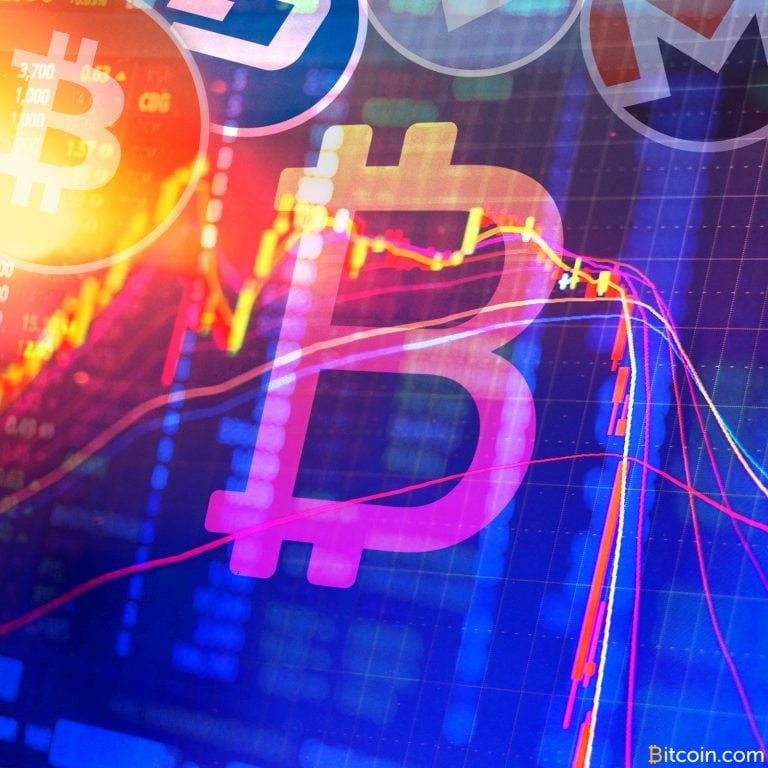
2020-3-25 16:00 |
Derivatives trading has taken the crypto world by storm. As a matter of fact, the open interest of Bitcoin futures and swaps has already exceeded $4 billion at the start of 2020, according to Skew Analytics (skew.com), up from $1 billion at the start of 2019.
Want more background context on what derivative trading is about? Here is a short guide!
The appeal of high leverage (up to 125x), low commissions, high liquidity and the innate volatility of cryptocurrencies have resulted in an increase in interest in derivatives trading, especially in the ubiquitous Bitcoin perpetual swap. This financial instrument, designed to mimic the price movement of the spot BTC/USD index, is now offered by most cryptocurrency exchanges.
However, in their eagerness to enter the fray and quickly “double” their capital, cryptocurrency traders overlook certain characteristics of the perpetual swap that makes it different from spot margin trading. Here are the top three mistakes that you need to avoid while trading perpetual swaps!
Terms & definitionsLeverage: The ability to take on more risk exposure, usually expressed as a multiple of collateral deposited (e.g. taking on 10 BTC of risk with only 1 BTC deposited translates to 10x leverage).
Liquidity: How easily a market order can be filled without impacting the overall market price.
Market Order: An order which aims to be filled immediately by resting limit orders, regardless of price. Traders use this type of order when execution of the order immediately is of high priority.
Open interest: The total number of outstanding derivative contracts as open positions, often used as an indicator to gauge the speculative intent of traders as a whole..
1. Do NOT Over-LeverageMost crypto derivative exchanges allow you to access up to 100x worth of leverage. This means that for every 1 BTC you deposit, you can control up to 100 BTC in an open position. While it sounds really attractive to be able to double your capital in a small 1% move in BTC prices (BTC moves on average about 4% a day), the reverse is also true. You can lose your entire capital in a mere >1% move.
Terms & definitionsOpen/close: The price at which a market opens at a time period, for example, at the start of the day; the price at which a cryptocurrency closes at a time period, for example, at the end of the day.
In general, these terms are more useful in traditional financial markets, as there are fixed hours of the day in which trading occurs.
The “breathing room” for a trade increases as leverage decreases. It is loosely given by this formula:
The higher the leverage you use, the nearer your liquidation price becomes. If you use 100x, the liquidation price is a mere ~1% away. If you use a more conservative 5x leverage, the liquidation price becomes a more comfortable ~25% away.
Given the volatile nature of cryptocurrencies, always ensure that you are not over-leveraged as you might get “stopped out” before your trade idea comes into fruition. I would recommend a leverage of not more than 5x for most swing traders as you would want to buffer for huge potential spikes in markets (which happen more often than not in the cryptocurrency space).
2. Do NOT Use Your Liquidation Price as Your Stop-LossMost derivative exchanges utilize two different prices in managing positional risks of traders: liquidation price and bankruptcy price. The reason for the difference is purely for risk management on the exchange’s part. As traders put large amounts of leverage in a volatile market, there will be instances where huge slippage happens when a trader’s portfolio undergoes bankruptcy. This means that the losing trader has now lost more money than he has collateral — and someone needs to pay the winning trader.
In order to ensure that all winning traders are paid, most exchanges have an insurance fund in place that guarantees the payout for traders on the right side of the market. And in order to ensure that the insurance fund has sufficient capital, some exchanges force a position to undergo liquidation before the trader’s account hits its bankruptcy price, and the difference between the two prices end up as money deposited into the insurance fund.
If you allow your position to be liquidated by the exchange, you will end up losing more than if you had used a stop-loss order in place of auto-liquidation. This difference becomes huge when a trader utilizes high leverage and is one of the biggest mistakes a trader can make.
Example:Joe puts on a 100x leveraged long on BitMEX-XBTUSD, with an entry price of $10,000. He has the following risk parameters:
Liquidation price: $9,951
Bankruptcy price: $9,901
If the market trades to $9,951, the liquidation engine kicks in and liquidates his position. It would assume an execution price of $9,901 (his bankruptcy price) and the difference between the two ($50) enters the insurance fund.
Use this calculator to calculate your liquidation price and manage your risks!
In summary — do NOT use high leverage and do NOT use your liquidation price as your stop-loss. Putting a stop loss at $9,960 in the above example would ensure you get to keep the $50 you posted and not have that money end up in the liquidation fund.
3. Use “Maker” Orders as Much as PossibleIn order to encourage liquidity on derivative exchanges, most exchanges offer rebates for “maker” orders, which are orders that wait for a fill instead of entering the market immediately.
While the commission difference between a “maker” order and a “taker” order might seem insignificant (a 0.025% rebate over a 0.075% fee), these fees add up over time. The difference between a maker and a taker is 0.1% in fees.
Example:Assuming Joe buys and sells 2 BTC in volume every day, the difference between “making” all and “taking” all would be the following:
Savings per day: 0.1% * 2 BTC = 0.002 BTC
Savings per month: 0.002 BTC * 30 days = 0.06 BTC
Savings per year: 0.06 BTC * 12 months = 0.72 BTC
The difference between “making” and “taking” may seem small, but patience in waiting for a fill goes a long way. After all, it is also good practice to “buy into dips” and “sell into rallies” when swing trading, so why not get paid while doing so!
CoinMarketCap has recently expanded our listings to include derivative markets. Check it out here!
This article is intended to be used and must be used for informational purposes only. It is important to do your own research and analysis before making any material decisions. This article is not intended as, and shall not be construed as, financial advice.
The views and opinions expressed in this article are the author’s own and do not necessarily reflect those of CoinMarketCap.
The post Top 3 Mistakes Crypto Derivatives Traders Make appeared first on CoinMarketCap Blog.
Similar to Notcoin - TapSwap on Solana Airdrops In 2024
Emerald Crypto (EMD) на Currencies.ru
|
|










